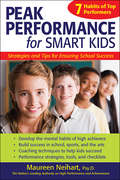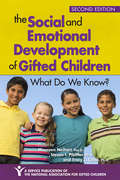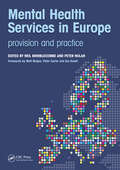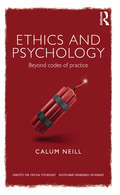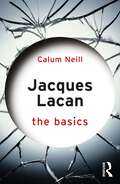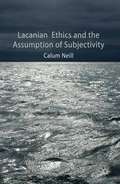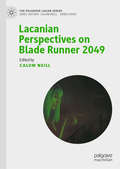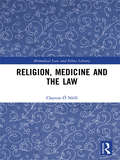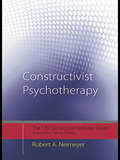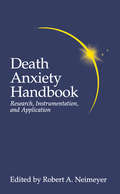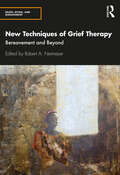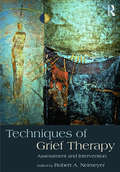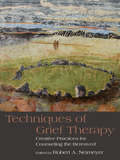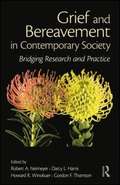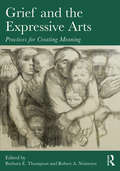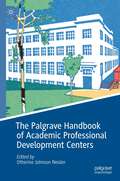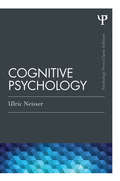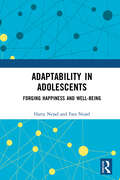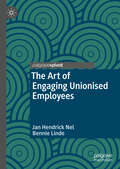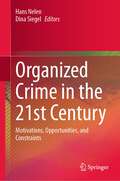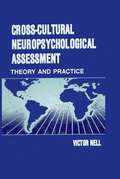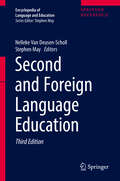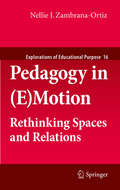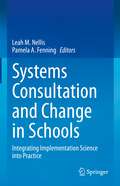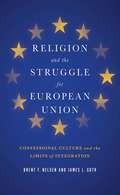- Table View
- List View
Peak Performance for Smart Kids
by Maureen NeihartPeak Performance for Smart Kids provides success strategies, activities, tools, real-life examples, and checklists for parents to employ to help their kids achieve to their highest potential. Even the most talented child will not succeed if he or she has not developed the mental, psychological, and emotional skills to face the heavy demands of high performance. Maureen Neihart, a psychologist and leading authority on talent development in children, examines seven mental habits of successful kids, providing practical approaches for developing them in talented children of all ages in this easy-to-read guide for parents and teachers.By working with parents to complete the activities included in this book, high-ability kids will learn to manage stress and anxiety, set and achieve goals, use mental rehearsal to improve performance, manage their moods and emotions, practice optimistic thinking, and resolve their frustrations of needing to belong while needing to achieve. With its research-based strategies and unique approach to maximizing potential, this is a book from which every parent of smart kids can benefit!
The Social and Emotional Development of Gifted Children
by Maureen Neihart Steven Pfeiffer Tracy CrossThe Social and Emotional Development of Gifted Children remains the only book that provides a comprehensive summary of the empirical research on the social and emotional development of gifted children by leading authorities in the field. It includes several features that make it the leading text on what we know about the social and emotional development of gifted children. For example, it summarizes the most significant findings from the empirical research on the topic. It also includes noteworthy variations that have been observed across cultural groups or global contexts. Each chapter also provides a short description of the practical applications that can be made from the research. This second edition includes an entirely new section on the psychosocial aspects of talent development, as well as addresses the burgeoning interest and research base regarding gifted performance. The text also includes several new topics that have emerged from the research in the past decade, such as the neuroscience of talent development and motivation for talent development. This book is a service publication of the National Association for Gifted Children.
Mental Health Services in Europe: Provision and Practice
by Brimblecombe Neil Peter NolanWorldwide, mental health problems are set to become the second greatest threat to health by the end of the next decade. The European Union has identified mental health problems as a growing concern, although there is great variation within EU countries with respect to patient numbers and the range of facilities available to them. Historically, EU mental healthcare services have been analysed using measurable aspects of care provisions such as throughput, costs and outcome measures. Little is known of the experiences, perceptions, beliefs and values of those accessing and providing services. This enlightening new book adopts a very different approach. With a particular focus on nursing, it examines and critiques the state of specialist mental health services in nine EU countries - Czech Republic, Finland, Ireland, Greece, Luxembourg, Netherlands, Germany, United Kingdom and Portugal. Each chapter focuses on a single country and ascertains existing services, their development, the treatments and care provided, factors preventing better service delivery, and suggestions for improvement. A rich pattern of differences emerge and comparisons can then be drawn. It also explores the emergence of an EU mental health identity in regards to selection of mental health personnel, their training and education, and the range of services they provide. Healthcare professionals and students with a particular interest in mental health issues (especially those with an interest in international approaches) will welcome the fresh analysis. It provides vital new information for European policy makers and shapers, voluntary sector personnel, and service users and the organisations representing them.
Ethics and Psychology: Beyond Codes of Practice (Concepts for Critical Psychology)
by Calum NeillThis highly original book explores the idea and potential of psychology in the context of ethical theory, and the idea of ethics in the context of psychology. In so doing, it not only interrogates how we come to understand ethics and notions of right behaviour, but also questions the discipline of psychology and how it functions in the 21st century. Neill turns psychology inside out, controversially suggesting that psychology no longer exists as we know it. He proposes a rebirth of psychology based on an intricate and detailed examination of who we really are, and how we come to structure this idea of ourselves. Taking the idea of ethics seriously, Neill allows us to see psychology in a totally new light, addressing key points, such as: The inadequacy of psychology to address the question of ethics throughout history. Why thinking through the question of ethics necessarily brings us into confrontation with a question of psychology. What we actually do when we do psychology and how, via a serious consideration of ethics we might do this differently and better. Ethics and Psychology presents readers with a new and potentially productive understanding of both ethics and psychology and will appeal to anyone active within and critically engaged with the field.
Jacques Lacan: The Basics (The Basics)
by Calum NeillJacques Lacan: The Basics provides a clear and succinct introduction to the work of Jacques Lacan, one of the key thinkers of the twentieth century. Lacan’s ideas are applied in the study of the humanities, politics, and psychology as well as contemporary media and the arts, but their complexity makes them impenetrable to many. This book is unique in explaining the key concepts and context, from Lacan’s understanding of psychoanalysis to drive and desire, in an accessible way without diluting them beyond meaning. Examples from popular culture are used throughout to emphasise the ideas being discussed and a full glossary and list of resources for further reading encourages additional exploration. This engaging and accessible text is essential reading for all those interested in Lacan and his work, as well as students of psychology, psychoanalysis, literature, politics, cultural studies, film studies, and more.
Lacanian Ethics and the Assumption of Subjectivity
by Calum NeillHowever we conceive of ethics, whether by appeal to an exterior or traditional notion of right and wrong, or by appeal to some form of individual virtue or responsibility, it implies some form of agency. Where there is an ethical act, there must be someone acting ethically. Working from this simple premise, this book argues that the manner in which we conceive that 'someone' is the condition of possibility for our conception of ethics and, consequently, our ethical potential. Against the commonplace conception of the modern individual as self-identical, self-aware and self-governing, theauthor presents a detailed introduction to the Lacanian subject, a conception of the self as anything but self-identical, self-aware and self-governing. The book goes on to show how such a rethinking of the subject necessitates a rethinking of our relation to law, tradition and morality, as well as a rethinking of our understanding of guilt, responsibility and desire. In short, it necessitates a rethinking of ethics. "
Lacanian Perspectives on Blade Runner 2049 (The Palgrave Lacan Series)
by Calum NeillThis book provides a collection of Lacanian responses to Denis Villeneuve’s Blade Runner 2049 from leading theorists in the field. Like Ridley Scott’s original Blade Runner film, its sequel is now poised to provoke philosophical and psychoanalytic arguments, and to provide illustrations and inspiration for questions of being and the self, for belief and knowledge, the human and the post-human, amongst others. This volume forms the vanguard of responses from a Lacanian perspective, satisfying the hunger to extend the theoretical considerations of the first film in the various new directions the second film invites. Here, the contributors revisit the implications of the human-replicant relationship but move beyond this to consider issues of ideology, politics, and spectatorship. This exciting collection will appeal to an educated film going public, in addition to students and scholars of Lacanian psychoanalysis, psychoanalytic theory, cultural studies, film theory, philosophy and applied psychoanalysis.
Religion, Medicine and the Law (Biomedical Law and Ethics Library)
by Clayton Ó NéillIs the legal protection that is given to the expression of Abrahamic religious belief adequate or appropriate in the context of English medical law? This is the central question that is explored in this book, which develops a framework to support judges in the resolution of contentious cases that involve dissension between religious belief and medical law, developed from Alan Gewirth’s Principle of Generic Consistency (PGC). <P><P>This framework is applied to a number of medical law case studies: the principle of double effect, ritual male circumcision, female genital mutilation, Jehovah’s Witnesses (adults and children) who refuse blood transfusions, and conscientious objection of healthcare professionals to abortion. <P><P>The book also examines the legal and religious contexts in which these contentious cases are arbitrated. It demonstrates how human rights law and the proposed framework can provide a gauge to measure competing rights and apply legitimate limits to the expression of religious belief, where appropriate. The book concludes with a stance of principled pragmatism, which finds that some aspects of current legal protections in English medical law require amendment.
Constructivist Psychotherapy: Distinctive Features (CBT Distinctive Features)
by Robert A. NeimeyerConstructivist psychotherapy focuses on the meaning that clients attribute to their world, and the way that this shapes their life and contributes to their difficulties. In this book, Robert A. Neimeyer, a leading figure in the field, provides a clear and accessible explanation of the key features of this approach. Constructivist Psychotherapy: Distinctive Features concentrates on the 30 key commitments that distinguish constructivism from other cognitive behavioural perspectives. Divided into two sections – Theory and Practice – this straightforward book is illustrated throughout with case material and recent research findings. Neimeyer provides us with a fresh perspective on familiar material, together with a clear, concise introduction to material that the reader may be less familiar with, making this book a valuable text for professionals in training as well as a source of new ideas for practising therapists of constructivist psychotherapy.
Death Anxiety Handbook: Research, Instrumentation, And Application (Death, Education, Aging and Health Care)
by Robert A. NeimeyerPresenting a broad coverage of this major area of studies on death and dying, this book provides a systematic presentation of the six most widely used and best validated measures of death anxiety, threat and fear. These chapters consider the available data on the psychometric properties of each instrument and summarize research using them, and also supply a copy of the instrument with scoring keys - to facilitate their use. In addition, other chapters make use of the instrumentation by pursuing questions of applied significance in various health care settings nursing homes, psychotherapy, death education, near death experiences, persons with AIDS, experiences of bereaved young adults.; An introductory chapter introduces the major philosophical and psychological theories of the causes and consequences of death anxiety in adult life, and a closing chapter gives an overview of death education and how this affects attitudes towards death and dying.
New Techniques of Grief Therapy: Bereavement and Beyond (Series in Death, Dying, and Bereavement)
by Robert A. NeimeyerNew Techniques of Grief Therapy: Bereavement and Beyond expands on the mission of the previous two Techniques books, featuring innovative approaches to address the needs of those whose lives have been shadowed by loss—whether through bereavement, serious illness, the rupture of a relationship, or other complex or intangible losses, such as of an identity-defining career. The book starts with several framing chapters by prominent theorists that provide a big- picture orientation to grief work and follows with a generous toolkit of creative therapeutic techniques described in concrete detail and anchored in illustrative case studies to convey their use in actual practice. New Techniques of Grief Therapy is an indispensable resource for professionals working in hospice, hospital, palliative care, and elder care settings; clinicians in broader health-care and mental health-care practices; executive coaches; and students in the field of grief therapy.
Techniques of Grief Therapy: Assessment and Intervention (Series in Death, Dying, and Bereavement)
by Robert A. NeimeyerTechniques of Grief Therapy: Assessment and Intervention continues where the acclaimed Techniques of Grief Therapy: Creative Practices for Counseling the Bereaved left off, offering a whole new set of innovative approaches to grief therapy to address the needs of the bereaved. This new volume includes a variety of specific and practical therapeutic techniques, each conveyed in concrete detail and anchored in an illustrative case study. Techniques of Grief Therapy: Assessment and Intervention also features an entire new section on assessment of various challenges in coping with loss, with inclusion of the actual scales and scoring keys to facilitate their use by practitioners and researchers. Providing both an orientation to bereavement work and an indispensable toolkit for counseling survivors of losses of many kinds, this book belongs on the shelf of both experienced clinicians and those just beginning to delve into the field of grief therapy.
Techniques of Grief Therapy: Creative Practices for Counseling the Bereaved (Series in Death, Dying, and Bereavement)
by Robert A. NeimeyerTechniques of Grief Therapy is an indispensable guidebook to the most inventive and inspirational interventions in grief and bereavement counseling and therapy. Individually, each technique emphasizes creativity and practicality. As a whole, they capture the richness of practices in the field and the innovative approaches that clinicians in diverse settings have developed, in some cases over decades, to effectively address the needs of the bereaved. New professionals and seasoned clinicians will find dozens of ideas that are ready to implement and are packed with useful features, including: Careful discussion of the therapeutic relationship that provides a "container" for specific procedures An intuitive, thematic organization that makes it easy to find the right technique for a particular situation Detailed explanations of when to use (and when not to use) particular techniques Expert guidance on implementing each technique and tips on avoiding common pitfalls Sample worksheets and activities for use in session and as homework assignments Illustrative case studies and transcripts Recommended readings to learn more about theory, research and practice associated with each technique
Grief and Bereavement in Contemporary Society: Bridging Research and Practice
by Robert A. Neimeyer Darcy L. Harris Gordon F. Thornton Howard R. WinokuerGrief and Bereavement in Contemporary Society is an authoritative guide to the study of and work with major themes in bereavement. Its chapters synthesize the best of research-based conceptualization and clinical wisdom across 30 of the most important topics in the field. The volume s contributors come from around the world, and their work reflects a level of cultural awareness of the diversity and universality of bereavement and its challenges that has rarely been approximated by other volumes. This is a readable, engaging, and comprehensive book that will share the most important scientific and applied work on the contemporary scene with a broad international audience, and as such, it will be an essential addition to anyone with a serious interest in death, dying, and bereavement. "
Grief and the Expressive Arts: Practices for Creating Meaning (Series in Death, Dying, and Bereavement)
by Robert A. Neimeyer Barbara E. ThompsonThe use of the arts in psychotherapy is a burgeoning area of interest, particularly in the field of bereavement, where it is a staple intervention in hospice programs, children’s grief camps, specialized programs for trauma or combat exposure, work with bereaved parents, widowed elders or suicide survivors, and in many other contexts. But how should clinicians differentiate between the many different approaches and techniques, and what criteria should they use to decide which technique to use—and when? Grief and the Expressive Arts provides the answers using a crisp, coherent structure that creates a conceptual and relational scaffold for an artistically inclined grief therapy. Each of the book’s brief chapters is accessible and clearly focused, conveying concrete methods and anchoring them in brief case studies, across a range of approaches featuring music, creative writing, visual arts, dance and movement, theatre and performance and multi-modal practices. Any clinician—expressive arts therapist, grief counselor, or something in between—looking for a professionally oriented but scientifically informed book for guidance and inspiration need look no further than Grief and the Expressive Arts.
The Palgrave Handbook of Academic Professional Development Centers (Palgrave Studies on Leadership and Learning in Teacher Education)
by Otherine Johnson NeislerThis handbook provides a global overview of the design, implementation and assessment of academic development centers within higher education institutions. The current nature of our complex, rapidly changing world makes it imperative that colleges and universities worldwide find ways to educate their students in new and better ways: this is reflected in a change in focus from teaching and testing to maximizing student learning in line with the core mission of ADCs to ensure students achieve the best possible learning outcomes. This handbook builds on this transformation, as well as the foundational ADC structure and programming guidelines established by the Professional and Organizational Development Network, to offer a comprehensive exploration of professional development in the sector. This handbook is global in scale and comprehensive in scope, addressing various key topics such as organizational structure and leadership, funding, and program design. It calls for professors and academics to reflect on and adapt their methods of teaching independent to their research, and provides helpful frameworks and case studies for researchers designing centers or seeking models for additional programs.
Cognitive Psychology: Classic Edition (Psychology Press & Routledge Classic Editions)
by Ulric NeisserFirst published in 1967, this seminal volume by Ulric Neisser was the first attempt at a comprehensive and accessible survey of Cognitive Psychology; as such, it provided the field with its first true textbook. Its chapters are organized so that they began with stimulus information that came 'inward' through the organs of sense, through its many transformations and reconstructions, and finally through to its eventual use in thought and memory. The volume inspired numerous students enter the field of cognitive psychology and some of the today's leading and most respected cognitive psychologists cite Neisser's book as the reason they embarked on their careers.
Adaptability in Adolescents: Forging Happiness and Well-Being
by Harry Nejad Fara NejadThis book discusses a newly developed concept of adaptability capacity and development as an extension of Charles Darwin’s work on adaptability. It looks at how the human mind uses adaptability resources to deal with life-changing, challenging, and varying circumstances and conditions. The volume presents an integrative process model that assesses the roles of socio-demographic and ability covariates, personality, and other dispositional presage factors in predicting psychological well-being outcomes, such as life satisfaction, happiness, and self-esteem. While exploring the concept of adaptability capacity, the volume focuses on making children and adolescents mentally, emotionally, and behaviorally adaptable. It discusses general and domain-specific constructs relevant to phenomena such as self-regulation, resilience, buoyancy, and coping mechanisms. The book focuses on the development and utilization of treatments to assist individuals in becoming positively adaptable and achieve a higher degree of positive well-being and self-actualization. An important contribution, this book will be of interest to students, researchers and teachers of psychology, educational psychology, and social work. It will also be helpful for academicians, mental health professionals, social workers, psychiatrists, counsellors, and those working in related areas.
The Art of Engaging Unionised Employees
by Jan Hendrick Nel Bennie LindeThis book introduces a framework to assist human resource practitioners and organisations embrace strategies that will drive high engagement levels within organisations with a union presence. The authors address established definitions of engagement and how they have been conceptualised in academic and practitioners’ literature, before exploring and unpacking circumstances that influence levels of engagement amongst employees in a unionised environment. In doing so, the framework introduced elaborates on approaches and interventions with the greatest potential to create, improve, and embed high levels of engagement within the unionised work environment.
Organized Crime in the 21st Century: Motivations, Opportunities, and Constraints
by Hans Nelen Dina SiegelThis edited volume brings together the most recent research about various aspects of organized crime and the responses that have developed worldwide as a result to contain serious criminal acts. This book focuses particularly on the way criminal networking and illegal markets have developed during the first two decades of the 21st century. It examines how these developments have influenced the motivations and opportunities to commit organized crime. The volume not only focuses on illegal activities in illegal markets, such as drug and human trafficking, but also addresses organized crime and deviance in various legitimate industries. The contributions were presented at seminars of the Centre for Information and Research on Organized Crime (CIROC), and will be of particular interest to organized crime scholars and researchers, as well as advanced students of criminology across the world.
Cross-Cultural Neuropsychological Assessment: Theory and Practice
by Victor NellThis is a book for all neuropsychologists who are called upon to assess culturally different clients--with very few exceptions today, this means every neuropsychologist. In Minneapolis as in Oslo, migrant and refugee minorities raise assessment and test validity problems that cannot be ignored. To deal realistically with the problem of doing neuropsychological assessments without norms, Nell describes the principles of a "behavioral neuropsychology," and then sets out interview, test, and interpretation methods that will allow clinicians to produce valid and prognostically accurate assessments. For working neuropsychologists, this is an intensely practical, how-to-do-it book. But unlike other hands-on guides, it lays an impressive historical and theoretical foundation for the practice of cross-cultural neuropsychology. It thus speaks to serious practitioners who need to be certain that their assessment findings are not only correct, but also sufficiently well-grounded to stand up to professional scrutiny and to forensic testing in a court of law.
Second and Foreign Language Education
by Nelleke Van Deusen-Scholl Stephen MayIn this third, fully revised edition, the 10 volume Encyclopedia of Language and Education offers the newest developments, including an entirely new volume of research and scholarly content, essential to the field of language teaching and learning in the age of globalization. In the selection of topics and contributors, the Encyclopedia reflects the depth of disciplinary knowledge, breadth of interdisciplinary perspective, and diversity of socio-geographic experience in the language and education field. Throughout, there is an inclusion of contributions from non-English speaking and non-western parts of the world, providing truly global coverage. Furthermore, the authors have sought to integrate these voices fully into the whole, rather than as special cases or international perspectives in separate sections. The Encyclopedia is a necessary reference set for every university and college library in the world that serves a faculty or school of education, as well as being highly relevant to the fields of applied and socio-linguistics. The publication of this work charts the further deepening and broadening of the field of language and education since the publication of the first edition of the Encyclopedia in 1997 and the second edition in 2008.
Pedagogy in (E)Motion
by Nellie J. Zambrana-OrtizThis personal, creative, critical work from a leading scholar of psychology is rooted in three novel concepts and aims to share critical pedagogy in the spirit of nascent potential found in the context of a colonial Puerto Rico. First comes the idea of 'pedagogy in (e)motion', or the emotional matrix of the teaching and learning process. Secondly, the author explores the notion of 'street pedagogy' as a genuine and powerful professional tool. And thirdly, the book underscores what Zambrana-Ortiz calls 'the interconnection of the artscience within the political and biographical act of teaching'. The purpose is to inform education teaching practice with the radical framework that, like the neurosciences, believes emotions to be a vital precursor to the planning of action, the process of decision-making and the broadening of our cognitive parameters. The chapters focus on different and yet complementary dimensions of a college teaching initiative boasting a unique interplay between a transgressive narrative, reinvented methodology and authentic samples of students' contributions to the project. Traditionally, emotional and visceral experiences have been downplayed and rejected as fundamental components of knowledge. This book makes the case for their reinstatement, and proposes that the pleasure and commitment of teaching itself can be seen as resistance given the challenging social and political context, the bureaucracy of the Puerto Rican higher education system, and the cynicism of the self-confessed cognoscenti who think that little political progress can come from within the university system. Such resistance has proved for the author a source of inspiration and has contributed to her creation and reconceptualization of approaches to critical and useful pedagogy. D edication To my students who inspire many stories and provoke many emotions and challenge my capacities... To Aura, Ignacio and Jaime for their unconditional love and their everyday lessons... A cknowledgments Many friends, mentors and colleages from the University of Puerto Rico and United States were very important pieces to my creative work. Thanks to Donaldo Macedo who encouraged the initial proposal and to Joe Kincheloe for accepting it and bringing guidance in the right moment. Colleages like Roamé Torres and Angeles Molina, from their directive positions, were extremely supportive while Sandra Macksoud, José Solís, Pedro Subirats, and Ada Prabhavat gave me guidance and constant insights in editing and translation, as well as crucial material for my narrative. Juan Vadi enhanced my graphic elements with his talent; while college mentors, current colleages, teachers, and former graduate and undergraduate students allowed me to write their stories and reflections binging fresh accents and life to the book. Thanks for ever!
Systems Consultation and Change in Schools: Integrating Implementation Science into Practice
by Leah M. Nellis Pamela A. FenningThis book explores the ways in which systems (organizational) consultation may be applied to school roles and functions as part of an overall systems change process. Using an implementation science framework grounded in systems/organizational consultation research, the volume details how school reform or improvement may be facilitated. School-based case studies illustrate the application of implementation science to systems change efforts in schools and districts across the United States. Each case study describes the implementation science steps taken to deliver a school-based innovation at the systems level. The book discusses implementation science theory combined with real-world examples of its use in planning for, implementing, and engaging in ongoing evaluation of a systems change effort. Key areas of coverage include:Implementation science in educational settings.Key stakeholder roles in school-based systems change.Implementing and evaluating systems change in schools.Teacher-student mediation to reduce conflict and ensure effective school discipline and behavior practices.District-level processes and supports for English Language Learners.Mental health screening and social-emotional well-being of students. Systems Consultation and Change in Schools is an essential resource for researchers, professors, and graduate students as well as scientist-practitioners, school-based practitioners, and clinicians across such disciplines as school administration and leadership, school and clinical child psychology, social work, public health, teaching and teacher education, educational policy and practice, and all interrelated fields.
Religion and the Struggle for European Union: Confessional Culture and the Limits of Integration (Religion and Politics)
by Brent F. Nelsen James L. Guth<p>In <i>Religion and the Struggle for European Union</i>, Brent F. Nelsen and James L. Guth delve into the powerful role of religion in shaping European attitudes on politics, political integration, and the national and continental identities of its leaders and citizens. <p>Nelsen and Guth contend that for centuries Catholicism promoted the universality of the Church and the essential unity of Christendom. Protestantism, by contrast, esteemed particularity and feared Catholic dominance. These differing visions of Europe have influenced the process of postwar integration in profound ways. Nelsen and Guth compare the Catholic view of Europe as a single cultural entity best governed as a unified polity against traditional Protestant estrangement from continental culture and its preference for pragmatic cooperation over the sacrifice of sovereignty. As the authors show, this deep cultural divide, rooted in the struggles of the Reformation, resists the ongoing secularization of the continent. Unless addressed, it threatens decades of hard-won gains in security and prosperity. <p>Farsighted and rich with data, <i>Religion and the Struggle for European Union</i> offers a pragmatic way forward in the EU's attempts to solve its social, economic, and political crises.
